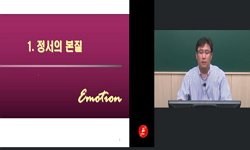본 연구의 실험집단은 U시 D초등학교 다문화 청소년 9명이며, 통제집단은 동 학교 비 다문화 학생 10명이 다. 색채심리치료 프로그램은 사전-사후 검사를 제외, 회기당 80분, 총 15차시로 구성...
http://chineseinput.net/에서 pinyin(병음)방식으로 중국어를 변환할 수 있습니다.
변환된 중국어를 복사하여 사용하시면 됩니다.
- 中文 을 입력하시려면 zhongwen을 입력하시고 space를누르시면됩니다.
- 北京 을 입력하시려면 beijing을 입력하시고 space를 누르시면 됩니다.
https://www.riss.kr/link?id=A108957705
- 저자
- 발행기관
- 학술지명
- 권호사항
-
발행연도
2023
-
작성언어
Korean
- 주제어
-
KDC
180
-
자료형태
학술저널
-
수록면
123-145(23쪽)
- 제공처
-
0
상세조회 -
0
다운로드
부가정보
국문 초록 (Abstract)
본 연구의 실험집단은 U시 D초등학교 다문화 청소년 9명이며, 통제집단은 동 학교 비 다문화 학생 10명이 다. 색채심리치료 프로그램은 사전-사후 검사를 제외, 회기당 80분, 총 15차시로 구성되었고, 5명의 다문화 예 비 실험군을 대상으로 예비 실험을 실시 후 전문가들의 평가 수정 후 최종 완성하였다. 척도는 사전-사후 정 서 표현 척도(EESC)와 교사용 사회성 기술 평정척도(SSRS)를 실시하였다. 자료는 IBM SPSS Statistics 25 for Windows를 이용하여 사전-사후 대응표본 t검정을 실시하였으며, Cronbach’s α 신뢰도 검증을하였다. 정 서 표현은 점수가 낮을수록 정서표현이 높고, 사회성 기술은 높을수록 사회성이 높다. 연구 결과, 다문화 청소 년 집단이 통제집단에 비하여 사전보다 사후에 정서표현 점수는 낮아지고(정서 인식 부족: M =3.19→1.93, 정 서표현 부족: M = 3.27→1.98), 사회성 기술 점수는 높아져(협력: M = 2.00→ 2.66, 자기 주장: M = 1.80→ 2.51, 자기 통제: M = 1.83→2.66) 다문화 청소년의 정서 표현 및 사회성 기술 향상에 미치는 효과성을 증명하 였다. 본 연구는 일부 다문화 청소년을 대상으로 연구를 진행하여 전체에 일반화하기에는 한계가 있다.
다국어 초록 (Multilingual Abstract)
This study is to improve emotional expression and social skills of multicultural Youths. whose color psychotherapy programs are difficult to express inner emotions. The experimental group of this study is 9 multicultural teenagers at D Elementary Scho...
This study is to improve emotional expression and social skills of multicultural Youths. whose color psychotherapy programs are difficult to express inner emotions. The experimental group of this study is 9 multicultural teenagers at D Elementary School in U-city, and the control group is 10 non-multicultural students at the same school. The color psychotherapy program consists of a total of 15 times, 80 minutes per session, excluding pre-and post-examinations, and was finally completed after conducting preliminary experiments on five multicultural preliminary experiments. The scales were implemented with the Pre-Post The Emotion Expression Scale for Chilldren (EESC) and the Teacher Social skills rating system (SSRS). The data were tested using IBM SPSS Statistics 25 for Windows with a pre-reactive sample t test and Cronbach's alpha reliability verification. Emotional expression is higher when the score is low, and social skills are higher when the social skills are high. As a result of the study, multicultural youth groups had lower emotional expression scores afterwards than control groups (lack of emotional awareness: M→3.19→1.93, lack of emotional expression: M→3.27→1.98), and higher social technology scores (cooperation: M=2.00→2.66, self-assertion: M=1.80=2.51, self-control: M=1.83=2.66). This study is conducted on some multicultural teenagers, and there is a limit to generalizing it as a whole.
목차 (Table of Contents)
- 초록
- Abstract
- Ⅰ. 서론
- 1. 연구의 필요성과 목적
- 2. 연구 문제
- 초록
- Abstract
- Ⅰ. 서론
- 1. 연구의 필요성과 목적
- 2. 연구 문제
- 3. 용어 정의
- Ⅱ. 연구방법
- 1. 연구모형
- 2. 연구대상
- 3. 연구 설계
- 4. 색채심리치료 프로그램 개발
- 5. 측정 도구
- 6. 자료 분석
- Ⅲ. 연구결과
- 1. 정서 표현에 미치는 효과
- 2. 사회성 기술에 미치는 효과
- Ⅳ. 결론 및 제언
- 1. 결론
- 2. 제언
- 참고문헌
동일학술지(권/호) 다른 논문
-
- 한국융복합예술심리치료학회
- 남현우
- 2023
-
ADHD 아동의 신경생리학적 국악 심리치료 교육프로그램 개발 연구
- 한국융복합예술심리치료학회
- 우덕상
- 2023
-
- 한국융복합예술심리치료학회
- 최주희
- 2023
-
- 한국융복합예술심리치료학회
- 문송이
- 2023




 eArticle
eArticle






